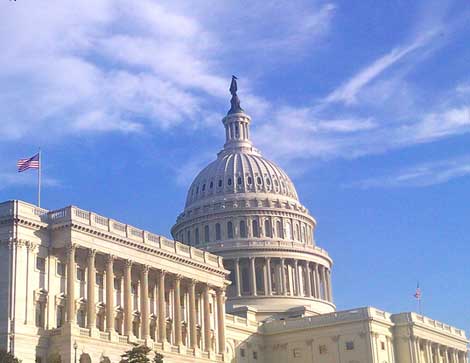U.S. Government Closes 64 More Data Centers
The U.S. government has closed an additional 64 data centers since its last update in August, bringing the total number of shuttered facilities to 381.
November 27, 2012


capital-clouds
The U.S. government has closed an additional 64 data centers since its last update in August, bringing the total number of shuttered facilities to 381. The closures are part of the Federal Data Center Consolidation Initiative (FDCCI), a lynchpin of the Obama administration’s effort to save taxpayer funds by streamlining government IT operations.
With President Barack Obama winning re-election, the FDCCI is expected to roll ahead, with an ultimate goal of closing 40 percent of the federal government's data centers by 2015. Is the project on track? Has it been efficient despite the nature of the beast?
Those aren't easy questions to answer for a massive project in which the end goal, along with many other key metrics, has been a moving target.
It appears that federal agencies are on pace to meet data center consolidation requirements established with the consolidation, which is expected to close 1,200 of the nearly 2,900 identified data centers by 2015.
By August, federal agencies had closed 318 data centers since the initiative’s launch. FDCCI’s goal then was to close another 196 by the end of fiscal 2013, meaning another 132 to go during fiscal year 2013. As of March 2012, the FDCCI updates reflect a shift from calendar year to fiscal year reporting, which is one of the reasons for mixed measurements.
A Revisionist History
The consolidation plan was announced in early 2010. The CIO at the time, Vivek Kundra, noted that the number of government data centers soared from 432 in 1999 to 1,100 plus in 2010. In October of 2011, the U.S. government once again boosted the number of data centers included in its huge data center consolidation, from 2,100 to 2,800, and increased the number of data centers it expects to close to 962 total data centers, up from 800. At the beginning of this year, the government said it expects to shutter at least 1,200 data centers, or about 40 percent of the 3,133 IT facilities identified at that point.
Wait...these numbers don’t match. At the onset there were 1,100 data centers, but the 2011 plan called for consolidation of 2,800. That’s right – federal data centers are so sprawling that it’s been hard to even get a figure. Another 1,000 data centers were discovered in October 2011.
The administration says it now has a comprehensive inventory of all data centers varying in size. Meanwhile, the General Accouting Office recently reported that the only agencies to submit complete data center inventories were the Social Security Administration, the Department of Housing and Urban Development, and the National Science Foundation - all because they have less than a couple of data centers, or they’re primarily outsourced already.
You think you have a virtual machine spawl problem? Imagine if those virtual machines were data centers.
Consolidation and Cloud
The goal is a more agile government. Cloud computing and data center consolidation are priorities. Data centers represent a large portion of federal IT spending, so consolidation is major initiative no matter what happens to the IT spending budget. Any budget pressure will most likely boost cloud computing because of the perceived cost savings, as well as the agility it brings. The "cloud first" initiatives have begun to seep into several departments, most recently seen with Microsoft’s Office 365 win with the Veterans Administration.
The highest number of closures was with the Department of Defence, which has closed 114 data centers out of 265 planned closures. Another noteworthy one is the Department of Homeland Security, considering the Department’s age and the importance of national security. DHS has closed 17 of a planned 42 facilities.
While the consolidation effort is on track, the expected savings may or may not be. The plan aims to bring $3 billion in savings, but there are varying predictions. OMB predictions range from $3 billion to $5 billion. In a GAO report, agencies predicted around $2.4 billion in savings.
It’s important to note that a lot of these closures aren’t massive facilities, but rather very small operations. As it continues, the plan will affect the larger data centers and subsequently, larger workforces.
This consolidation effort is actually arguably a good thing for the multi-tenant data center industry. The drive for greater efficiency will render many of the current data center properties obsolete. Many older data facilities don't have the power capacity to support a highly-utilized equipment space. Consolidation also leads to higher densities, which are more difficult to cool in legacy facilities. That means new data center space, most likely in northern Virginia and Maryland.
About the Author
You May Also Like






